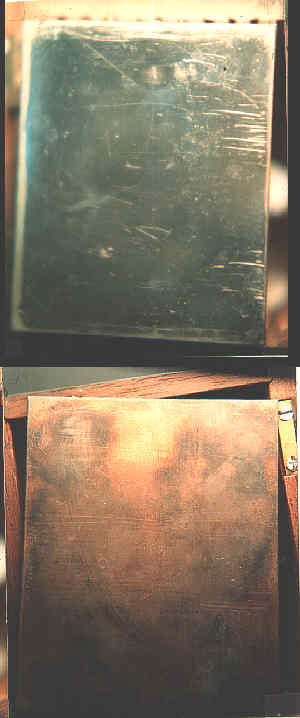
Ninth-plate
daguerreotype Plate "B"
(Writer's collection.)
|
WRITTEN ON BACK: Nothing.
POSSIBLE LENS: ?
DRAPER QUOTATION: None.
HYPOTHESIS: This plate may once have contained a visible image. William Henry
Goode
explained that Draper's earliest method of fixing images utilizing zinc, "is now generally
abandoned, in consequence of the tarnishing of the proof after a time." This process or some other
factor in the last 150 years may have caused the original image to fade from sight.
On the other
hand, the plate may always have been just as visually indistinct as it now appears. It was possibly
saved within the plate-box as an example of under or over-exposure, a failed exposure with a
different lens, or for some other experimental variable.
|